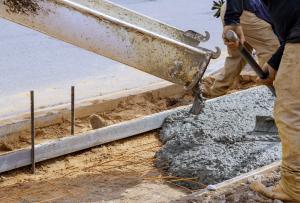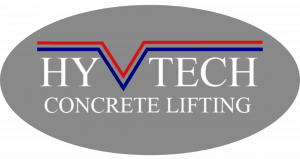
Understanding the Impact of Louisiana Soil Conditions on Concrete Stability and Structural Integrity
Darren Averitt, owner of Hy Tech Concrete Lifting, emphasizes the importance of addressing soil-related concerns before they compromise the safety and longevity of concrete structures.
Common Soil Types in Louisiana and Their Impact on Concrete
"Louisiana’s soil conditions vary by region, but certain types are more problematic for concrete stability," notes Averitt. These include expansive clay, loose sandy soils, and high moisture-content soils. Each type presents distinct challenges that can affect concrete surfaces.
Expansive Clay Soil
Expands when wet and contracts when dry, creating movement beneath concrete structures.
Leads to cracks and uneven surfaces as the soil shifts.
Causes long-term settlement issues that worsen over time.
Sandy Soils
Lack the density to provide strong support for concrete slabs.
Prone to erosion, especially in areas with heavy rainfall.
Can wash away under concrete, leading to voids that cause sinking.
High Moisture-Content Soil
Retains water, leading to weak soil support.
Increases hydrostatic pressure, which can push against foundations and slabs.
Creates instability that contributes to foundation shifting and settlement.
Effects of Unstable Soil on Concrete Structures
When soil beneath concrete shifts, it creates a range of issues that impact structural integrity. Some of the most common problems include:
Cracking: Soil movement places stress on concrete, leading to visible cracks. These can worsen over time, allowing moisture infiltration that further weakens the structure.
Sinking and Settling: When voids form beneath a concrete slab due to erosion or soil shrinkage, the slab can sink unevenly. This can create trip hazards and drainage issues.
Foundation Shifting: Expansive clay soils that swell and contract can cause a foundation to move, leading to misaligned doors, cracks in walls, and uneven flooring.
Pooling Water and Drainage Issues: Poor soil support can lead to improper drainage, resulting in standing water that accelerates deterioration.
Preventative Measures to Reduce Soil-Related Concrete Problems
Addressing soil conditions before major damage occurs can help extend the lifespan of concrete structures. Some of the key strategies include:
Soil Stabilization: Treating the soil beneath concrete with stabilizing materials can help reduce shifting and settling.
Proper Drainage Solutions: Ensuring that water is directed away from concrete surfaces prevents erosion and soil expansion. This may include installing French drains, gutter extensions, or grading adjustments.
Polyurethane Foam Injection: In cases where soil has already shifted, polyurethane foam injection can help fill voids beneath concrete slabs to restore stability.
Routine Inspections: Regular checks for cracks, uneven surfaces, and water pooling can help identify early signs of instability before they worsen.
Addressing Concrete Issues Caused by Louisiana’s Soil
Once soil-related damage has occurred, solutions are available to restore stability. Some of the most effective methods include:
Concrete Lifting and Leveling: Techniques such as polyurethane foam injection or mudjacking can lift sunken concrete and fill voids caused by eroded or shifting soil.
Crack Repair and Sealing: Sealing cracks in concrete prevents further water infiltration that can exacerbate soil movement.
Soil Reinforcement: Adding compaction materials or using geotextiles can strengthen soil support beneath concrete surfaces.
Conclusion
The soil conditions in Louisiana create unique challenges for maintaining stable concrete structures. Expansive clay, sandy soils, and high moisture levels contribute to shifting, cracking, and sinking concrete. Preventative measures, including proper drainage, soil stabilization, and regular inspections, can help property owners protect their investments. When damage occurs, professional solutions such as concrete lifting and crack repair can restore structural integrity. Understanding the relationship between soil and concrete stability is crucial in preventing long-term issues that impact safety and functionality.
Morgan Thomas
Rhino Digital, LLC
+1 504-875-5036
email us here
Visit us on social media:
Facebook
Distribution channels: Building & Construction Industry, Culture, Society & Lifestyle, Environment, Real Estate & Property Management
Legal Disclaimer:
EIN Presswire provides this news content "as is" without warranty of any kind. We do not accept any responsibility or liability for the accuracy, content, images, videos, licenses, completeness, legality, or reliability of the information contained in this article. If you have any complaints or copyright issues related to this article, kindly contact the author above.
Submit your press release

